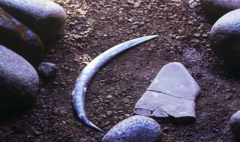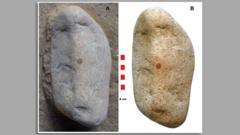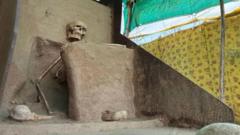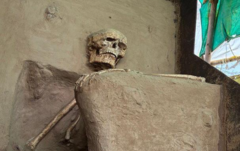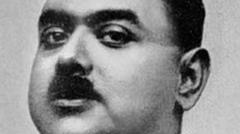Renowned computer scientist Rajesh PN Rao is at the forefront of a global initiative to crack the undeciphered Indus script, spurred by a recent $1 million prize announced by Tamil Nadu's Chief Minister MK Stalin. While theories abound regarding its meaning and origins, experts are utilizing advanced machine learning techniques to identify patterns in this ancient writing system that could finally unlock its secrets.
The Quest for Decoding the Indus Script: A Million-Dollar Challenge
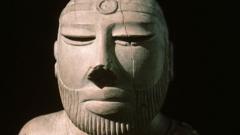
The Quest for Decoding the Indus Script: A Million-Dollar Challenge
A new challenge with a $1 million prize has intensified global efforts to decode the ancient Indus script, a mystery that has plagued scholars for more than a century.
Every week, Rajesh PN Rao, a prominent computer scientist and leading authority on the ancient Indus script, receives emails from individuals who claim to have finally cracked the code of a writing system that has left experts stumped for generations. These hopeful codebreakers, which include a diverse range of professions from engineers to retirees, are predominantly from India or of Indian heritage living abroad, fueled by a collaborative spirit to decipher the Indus script—a system comprised of intricate signs and symbols primarily found on stone seals.
Adding an unexpected twist to this quest, MK Stalin, the Chief Minister of Tamil Nadu, a southern Indian state, recently enhanced the stakes by announcing a $1 million prize for anyone who successfully deciphers the script. The Indus Civilization, known for being one of the world’s earliest urban societies, thrived around 5,300 years ago in what is now northwest India and Pakistan. Despite the civilization's impressive advances in urban planning and trade, its sudden decline remains enigmatic, with no clear evidence tying it to war or natural disasters, while the mystery of its undeciphered script persists.
Scholars from various disciplines, including linguists, scientists, and archaeologists, have endeavored for over a century to understand the Indus script. Some theories suggest possible connections to early Brahmi scripts or link it with Dravidian languages, yet consensus remains elusive. Recently, speculative interpretations have emerged, associating the script with themes found in Hindu scriptures and attributing spiritual significance to its inscriptions. However, many contend that this perspective overlooks the commercial nature of the inscriptions, primarily appearing on seals used for trading purposes, as argued by Rao.
Deciphering the Indus script is inherently challenging due to several factors. The script consists of approximately 4,000 distinct signs, most appearing on small artifacts like seals and pottery. Each inscription is brief, averaging only five symbols, providing researchers with scant context for interpretation. Additionally, unlike the Rosetta Stone, which offered a comparative basis between known and unknown languages, no such bilingual artifact exists for the Indus script.
Advancements in technology have prompted a fresh approach to tackling the script's mysteries. Researchers, including Nisha Yadav from the Tata Institute of Fundamental Research (TIFR), are leveraging machine learning techniques to detect patterns and structures in the writing. Recent studies have uncovered 67 characters that are prevalent in 80% of the script. The findings suggest a possible underlying logic in the writing, though Yadav emphasizes that it remains uncertain whether these symbols represent complete words, parts of words, or sentences.
Despite the ongoing efforts to decipher the script, the challenge is reminiscent of other ancient, undeciphered scripts such as Proto-Elamite from Iran or Linear A from Crete, which also lack known languages. Back in India, the motivation behind Mr. Stalin’s announcement remains ambiguous but might serve to elevate the state's cultural identity in opposition to the national narrative upheld by the ruling Bharatiya Janata Party (BJP) in Delhi.
While the stakes are higher than ever, scholars like Yadav express skepticism about the prompt emergence of a credible claim for the reward, despite having established comprehensive databases of all known inscribed artefacts critical for future progress. The quest to unravel the mysteries of what the Indus people truly wrote continues, leaving researchers and enthusiasts alike impatiently waiting for what could ultimately reshape our understanding of ancient Indian history.





